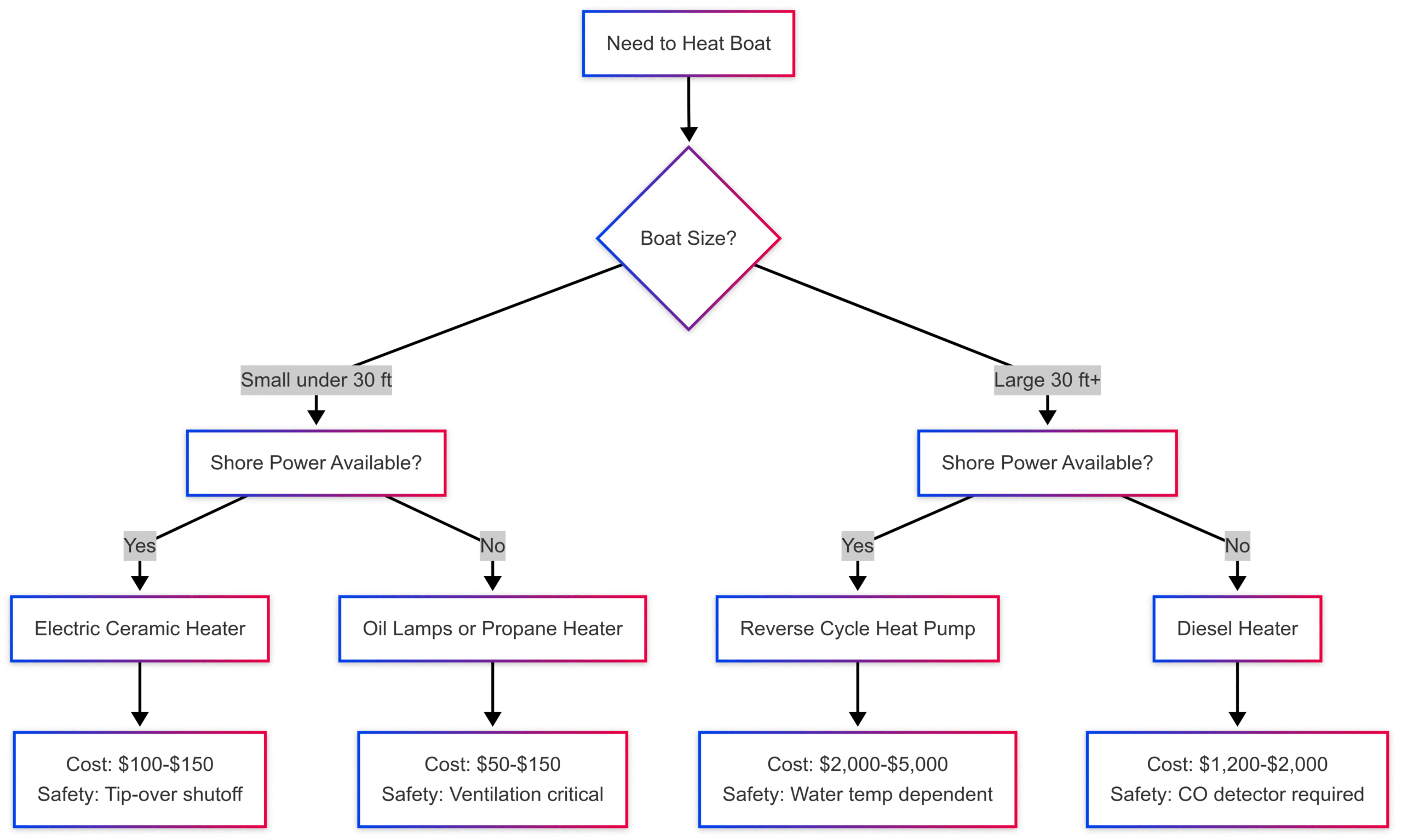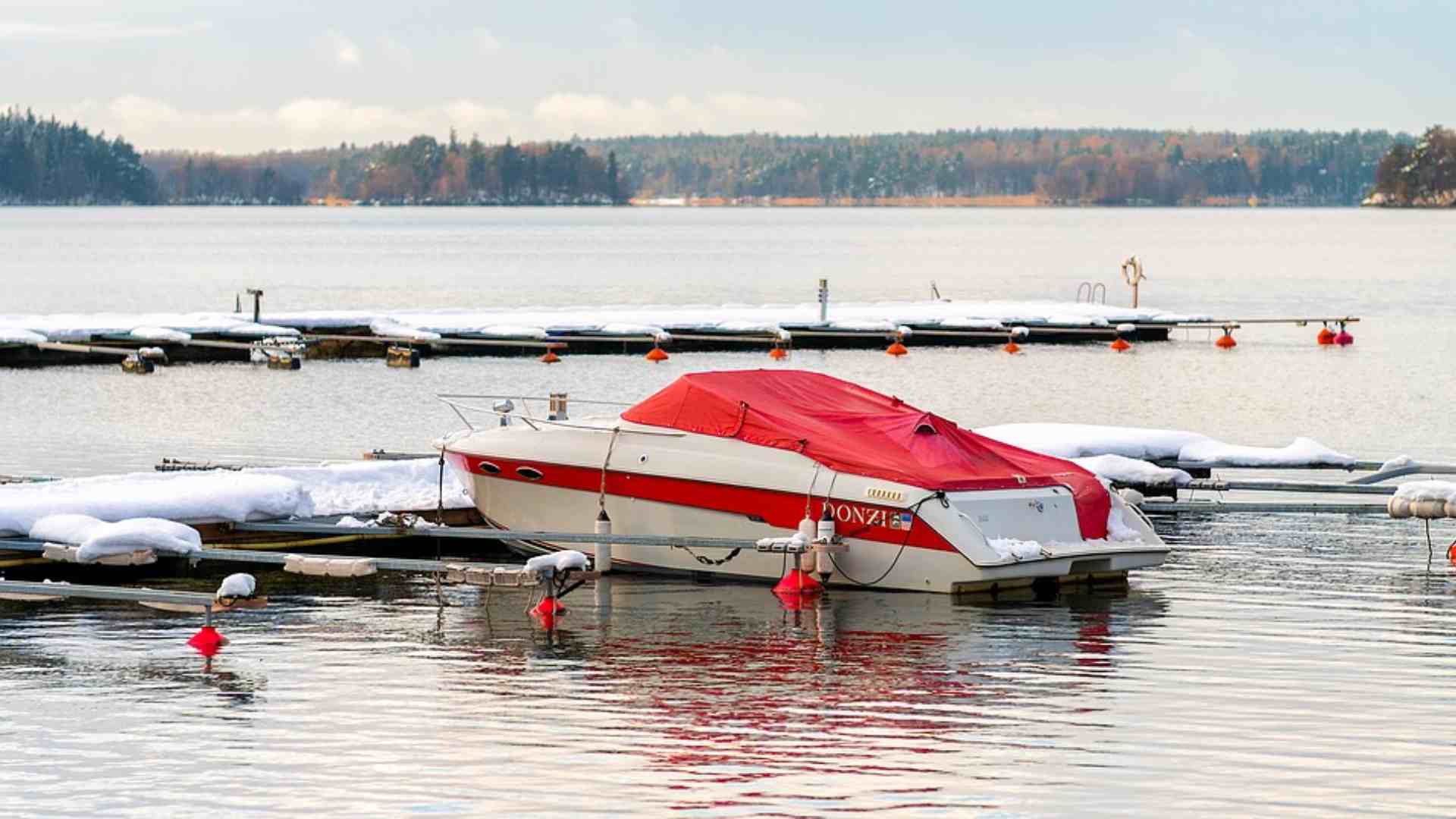How to Stay Warm Onboard a Boat: The Do’s and Don’ts
Learn how to stay warm on a boat with expert tips on layering, heating options, and safety. Discover do’s and don’ts for cozy winter boating.
Boating during colder months offers a unique blend of tranquility and adventure. The water is often less crowded, the scenery is crisp, and the experience can be deeply rewarding. However, staying warm onboard a boat in chilly weather requires careful planning and execution. Cold air, combined with wind and potential water exposure, can make conditions feel far harsher than on land. This comprehensive guide outlines the do’s and don’ts of staying warm onboard, covering clothing, heating options, safety measures, and practical tips to ensure comfort and safety. Whether you’re embarking on a day trip or living aboard, these strategies will keep you cozy and safe.
The Importance of Staying Warm on a Boat
Cold weather boating amplifies the risk of hypothermia, a dangerous condition where the body loses heat faster than it can produce it. Water temperatures below 70°F (21°C) significantly increase this risk, as do air temperatures that, when combined with water temperatures, fall below 100°F (37.8°C). For paddlesports or activities with a high likelihood of getting wet, this threshold rises to 120°F (48.9°C). Proper preparation is critical not only for comfort but also for survival. This guide provides actionable advice to maintain warmth, prevent hypothermia, and enhance your boating experience.
Do’s for Staying Warm Onboard
1. Layer Up with Purpose
Layering is the cornerstone of staying warm in cold weather. The right clothing system traps heat, wicks moisture, and protects against wind and water. Follow these layering principles:
- Base Layer: Choose moisture-wicking materials like synthetic fabrics (polypropylene or polyester) or merino wool. These materials pull sweat away from your skin, keeping you dry and warm. Avoid cotton, as it retains moisture and accelerates heat loss.
- Insulating Layer: Add a fleece, wool sweater, or down jacket for insulation. These materials trap air, which your body warms, creating a thermal barrier.
- Outer Layer: A windproof and waterproof jacket and pants are essential. Foul-weather gear designed for boating, such as those from brands like Musto or Gill, provides durable protection against wind, rain, and spray.
Pro Tip: Invest in high-quality foul-weather gear with sealed seams and adjustable cuffs. Prices for top-tier jackets range from $200 to $500, while pants cost $150 to $300, depending on the brand and features.
2. Protect Your Extremities
Heat loss occurs most rapidly through your head, hands, and feet. Protecting these areas is non-negotiable:
- Head: Wear a wool or synthetic beanie or watch cap. A balaclava or neck gaiter adds extra protection against windburn, especially when underway. Ski goggles ($30-$100) can shield your eyes from sleet or spray.
- Hands: Choose insulated, waterproof gloves or convertible mittens ($50-$100). For anglers or those needing dexterity, fingerless gloves with fold-over mitts are ideal, allowing you to handle lines or electronics without exposing your hands.
- Feet: Insulated, waterproof deck boots ($80-$200) are a must. Avoid layering socks, as this compresses the air pocket in your boots, reducing insulation. Bring an extra pair of shoes stored in a dry bag in case your primary pair gets wet.
3. Insulate Your Boat
Reducing heat loss from your boat’s interior is as important as dressing appropriately. Consider these insulation options:
- Insulated Covers: Boat covers or shrink-wrapping can create a barrier against cold air and wind. Shrink-wrapping, popular in colder regions like the Northeast, costs $15-$25 per foot but keeps the boat dry and reduces snow accumulation.
- Thermal Insulation: Apply self-adhesive foam or reflective insulation to cabin walls and hatches. Products like Reflectix ($30-$50 per roll) are affordable and effective.
- Bimini Top or T-Top: These structures provide shelter from wind and rain, maintaining a warmer microclimate in the cockpit. Prices range from $500 to $2,000, depending on size and material.
4. Use Safe Heating Systems
Heaters can transform a cold boat into a cozy retreat, but safety is paramount. Here are the best options:
- Electric Heaters: Ceramic heaters with thermostatic switches and tip-over shutoff features are ideal for boats on shore power. Models like the Caframo True North ($100-$150) are compact and marine-grade. Ensure your electrical system can handle the load (typically 1,000-1,500 watts) to avoid shorts or fires.
- Diesel Heaters: Gravity-fed or forced-air diesel heaters, like the Espar D4 ($1,200-$2,000), are efficient for off-grid boating. They circulate warm air, reducing humidity and mold. Monitor fuel levels, as long trips can deplete reserves quickly.
- Reverse Cycle Heat Pumps: These systems use water temperature to heat or cool the cabin. They’re effective unless water temperatures drop below 40°F (4.4°C). Prices range from $2,000 to $5,000, including installation.
Safety Note: Always ensure proper ventilation to prevent carbon monoxide buildup. Install a carbon monoxide detector ($20-$50) and never leave heaters unattended.
5. Leverage Oil Lamps for Ambiance and Warmth
Oil lamps, such as traditional trawler lamps ($50-$150), provide both light and supplemental heat without draining batteries or fuel. Use smokeless lamp oil to avoid soot or odors. Two lamps can raise the saloon temperature by 5-10°F while creating a cozy atmosphere.
Chart: Below is a visual representation of the decision-making process for choosing a heating system based on boat size and power availability.

6. Cook to Warm the Cabin
Your boat’s galley is a powerful tool for staying warm. Cooking on an electric or propane stove generates heat and fills the cabin with comforting aromas. Prepare hot meals like soups, stews, or baked goods to raise the cabin temperature by 5-15°F, depending on the stove’s output (typically 1,000-3,000 BTUs for marine stoves).
Table: Sample Galley Recipes for Warmth
| Dish | Prep Time | Heat Output | Ingredients Needed |
|---|---|---|---|
| Beef Stew | 30 min | High | Beef, potatoes, carrots, broth |
| Baked Cookies | 20 min | Moderate | Flour, sugar, butter, chocolate chips |
| Hot Cocoa | 10 min | Low | Cocoa powder, milk, sugar |
Safety Tip: Never leave the stove unattended, especially with propane systems. Keep flammable materials like dish towels away from open flames.
7. Stock Emergency Supplies
Prepare for unexpected situations by keeping these items onboard:
- Mylar Space Blankets: Lightweight and compact, these cost $5-$10 each and trap body heat effectively.
- Dry Clothes: Store extra clothing in a waterproof dry bag ($20-$50).
- First-Aid Kit: Include bandages, antiseptics, and any necessary medications ($30-$100).
- Hot Water Bottles: These cost $10-$20 and provide hours of warmth under blankets.
8. Relocate for Warmer Climates
If staying warm feels like a constant battle, consider relocating to a warmer region. Sailing from a cold harbor like Boston to the Caribbean’s Tobago Cays eliminates the need for extensive heating solutions. Early December and January often offer affordable charter deals, with costs ranging from $1,500 to $5,000 per week for a 40-foot sailboat.
Don’ts for Staying Warm Onboard
1. Don’t Wear Cotton
Cotton absorbs moisture and loses its insulating properties when wet, accelerating heat loss and increasing hypothermia risk. Stick to synthetic or wool-based materials for all layers.
2. Don’t Ignore Ventilation
Proper ventilation prevents condensation and frost, which can make the cabin feel colder and promote mold growth. Open hatches when cooking or using heaters to expel moist air. Dehumidifiers ($100-$300) are a worthwhile investment for liveaboards.
3. Don’t Compromise on Safety
Heaters, especially propane or diesel models, pose risks of fire or carbon monoxide poisoning. Always follow manufacturer guidelines, install CO detectors, and avoid using household heaters not designed for marine environments.
4. Don’t Overload the Boat
Adding extra gear like heaters, blankets, or insulation can affect your boat’s balance and stability. Ensure weight is distributed evenly and avoid exceeding your boat’s capacity, typically listed in the owner’s manual (e.g., 1,000-2,000 lbs for a 30-foot boat).
5. Don’t Use Candles
Candles are a fire hazard on boats due to their open flames and the confined space. Opt for LED candles ($10-$30) for ambiance or oil lamps for safe heat and light.
Additional Tips for Cold-Weather Boating
1. Wear a Life Jacket or Float Coat
A U.S. Coast Guard-approved life jacket is essential in cold weather, as it provides insulation and keeps you afloat if you fall overboard. Float coats ($150-$300) combine warmth and flotation, delaying hypothermia onset. Avoid inflatable life jackets in temperatures below 40°F, as they inflate slowly and offer less buoyancy.
2. Monitor for Hypothermia
Recognize hypothermia symptoms: shivering, confusion, slurred speech, fatigue, and impaired movement. If symptoms appear, move to a warm, dry environment, drink warm liquids, and seek medical help if severe.
3. Check Marine Forecasts
Cold weather increases the likelihood of fog, strong currents, and waves. Check marine-specific forecasts via NOAA or apps like Windy before heading out.
4. Maintain Communication
Carry a VHF radio with DSC (Digital Selective Calling) and program your MMSI number (free via BoatUS.com/MMSI). A Personal Locator Beacon (PLB, $300-$500) is a reliable backup for summoning help.
5. Ensure Battery Reliability
Cold temperatures reduce battery capacity by up to 20%. Charge all batteries fully before departure and carry a portable power bank ($20-$50) for electronics.
Community Insights: Real Boaters’ Tips
Boaters in colder regions like the Pacific Northwest (PNW) and Alaska share practical solutions for staying warm:
- Ceramic Heaters: Many liveaboards use ceramic heaters with thermostatic switches ($100-$150) for consistent warmth on shore power.
- Diesel Heaters: Models like the Eberspacher D4 ($1,200-$2,000) are popular for their efficiency and ability to reduce humidity.
- Heated Mattress Pads: These ($50-$100) keep bunks warm without relying on cabin heaters.
- Dehumidifiers: Running a dehumidifier ($100-$300) alongside heaters prevents mold and keeps the cabin dry.
Example Comment: A PNW liveaboard recommends, “Run your diesel heater weekly to dry out the boat and prevent internal corrosion. Pair it with a small 12-volt fan to circulate air.”
Key Takeaways
Staying warm onboard a boat requires a combination of proper clothing, effective heating, and safety precautions. Layer with synthetic or wool materials, protect extremities, and invest in marine-grade heaters or oil lamps. Insulate your boat, cook warm meals, and stock emergency supplies. Avoid cotton, ensure ventilation, and prioritize safety to prevent fires or carbon monoxide risks. For those who can’t stand the cold, relocating to warmer waters is a viable option. With these strategies, you can extend your boating season and enjoy the water year-round.
Table: Cost Breakdown of Key Equipment
| Item | Price Range | Purpose |
|---|---|---|
| Foul-Weather Jacket | $200-$500 | Wind and water protection |
| Insulated Deck Boots | $80-$200 | Foot warmth and traction |
| Ceramic Heater | $100-$150 | Cabin heating (shore power) |
| Diesel Heater | $1,200-$2,000 | Off-grid heating |
| Oil Lamp | $50-$150 | Supplemental heat and light |
| Shrink-Wrapping | $15-$25/ft | Boat insulation |
| Float Coat | $150-$300 | Warmth and flotation |
By following these do’s and don’ts, you’ll be well-equipped to stay warm, safe, and comfortable on your boat, no matter how low the temperatures drop. Happy boating!
Happy Boating!
Share How to Stay Warm Onboard a Boat: The Do’s and Don’ts with your friends and leave a comment below with your thoughts.
Read Holiday Gift Guide for Boaters: Kids Edition until we meet in the next article.






